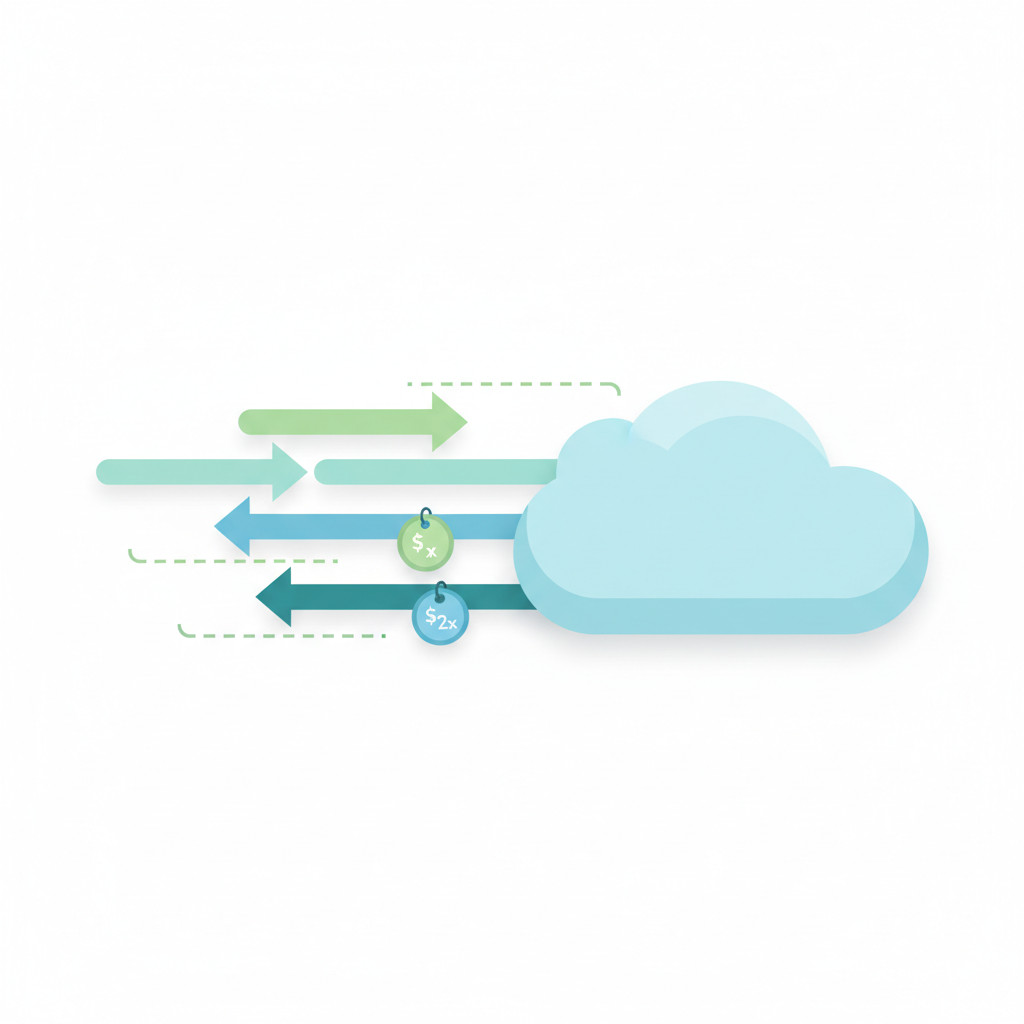Bandwidth-based pricing: what it means for your hosting costs
Bandwidth-based pricing ties hosting costs to data transfer, not just visits. For businesses hosting digital services or websites, this change matters because bot traffic and media-heavy pages can inflate bandwidth. Therefore understanding bandwidth-based pricing helps you forecast expenses and choose the right hosting plan. In contrast to visits-based pricing, this model charges for bytes moved across your network. As a result you gain transparency and control over costs, especially when using CDNs, caching, or bot filtering.
Many companies face unpredictable charges because bots and scrapers consume large bandwidth shares. However, switching models can lower bills for media rich sites. Additionally, cloud services pricing and dynamic pricing trends make this option more relevant today. Because hosting providers now offer toggles between visits and bandwidth plans, you can pick what fits your traffic profile. To prepare, monitor bandwidth patterns, enable caching, and vet bot management tools. This article explains practical steps, cost trade offs, and how Kinsta and Cloudflare are responding to rising automation. Read on to learn how to protect performance and budget with smarter pricing choices.

What is bandwidth-based pricing?
Bandwidth-based pricing charges for data transfer rather than visits. For cloud and hosting services, providers measure bytes sent and received. This usage billing model links costs to how much data your site moves. As a result, heavy media, API responses, and large file downloads raise bills faster than simple page views.
Many hosts now let customers switch between visits-based and bandwidth-based pricing. For example, Kinsta announced a bandwidth option to give customers more choice and transparency here. Because bot activity can skew visit counts, billing by bandwidth can match costs to resource use.
How bandwidth-based pricing works in cloud services
- Metering: providers record outbound and inbound traffic across interfaces.
- Billing tiers: you pay per GB or receive an included allotment with overage rates.
- Mitigation tools: CDNs, caching, and compression reduce transferred bytes.
- Exceptions: some providers exclude specific bot traffic or offer free CDN bandwidth.
Example: A media site serving high-resolution images may use 500 GB monthly. Under bandwidth pricing, charges reflect that volume. In contrast, a blog with many small visits might pay more under visits-based pricing.
Benefits and challenges
Benefits:
- Greater transparency because costs follow usage.
- Predictable if you can control data flow through caching and CDNs.
- Fairer for sites with many small visits but low data transfer.
Challenges:
- Sudden spikes from bots or scrapers can balloon costs.
- Monitoring becomes more important because internet service provider pricing varies.
- Some organizations lack tooling to break down bandwidth by bot versus human traffic.
To reduce risk, implement caching, use a CDN, and enable bot filtering. Kinsta and Cloudflare work on improving bot filtering and CDN capacity to limit unnecessary bandwidth consumption here. Therefore you can lower bills while preserving performance.
This section used related keywords such as dynamic pricing, usage billing, and internet service provider pricing. It explains practical trade-offs and a path to pick the right model.
Pricing model comparison
Below is a quick comparison of common hosting pricing models. Use this to weigh trade offs and choose wisely.
| Pricing model | Cost predictability | Flexibility | Customer control | Typical use cases |
|---|---|---|---|---|
| Bandwidth-based pricing | Moderate to high if usage is stable. Costs follow GB transferred. | High for media heavy sites. | High control via CDN and caching. | Streaming media, large downloads, API services |
| Flat-rate pricing | High predictability with a single fixed fee. | Low flexibility when usage grows. | Low control over per-use costs. | Small blogs, portfolio sites, basic landing pages |
| Tiered pricing | Predictable within chosen tier limits. | Moderate flexibility by switching tiers. | Moderate control through tier selection. | Growing businesses with steady traffic bands |
| Usage-based pricing | Low predictability with variable bills. | Very flexible; pay only for what you use. | High operational control, needs monitoring. | Cloud compute, bursty workloads, pay-as-you-go apps |
Real-world applications of bandwidth-based pricing
Bandwidth-based pricing appears across cloud computing, internet service providers, and streaming platforms. For cloud providers, charging by data moved aligns costs with resource use. As a result, providers scale network capacity efficiently because customers who use more bandwidth pay more.
Cloud computing
- Example: Cloud providers meter egress and apply per GB fees. This encourages developers to optimize data transfer and cache responses. For instance, edge caching reduces repeated payloads, lowering network load and bills.
Internet service providers
- Many ISPs use data caps or tiered bandwidth charges. Because video drives most traffic, ISPs use bandwidth rules to shape plans. Sandvine reports video now makes up about 65 percent of internet traffic, which explains why bandwidth matters: Sandvine’s report.
Streaming platforms
- Streaming firms balance quality and cost by encoding and CDN placement. Consequently, they reduce egress by using local caches and adaptive bitrate. In turn, customers consume less network resources per stream.
Evidence and efficiency
- Bandwidth-based models let providers forecast network demand and provision better. For example, Sandvine and network operators use traffic studies to plan capacity and reduce congestion. Additionally, Cloudflare shows that bot traffic inflates bandwidth use; managing bots lowers wasted transfer: Cloudflare’s report.
- Kinsta’s move to offer bandwidth-based plans illustrates a trend. Kinsta gives customers a choice, and excludes certain bot bandwidth from charges to protect users: Kinsta’s announcement.
Vivid example
- Imagine a news site with high-resolution images. Under bandwidth billing, the site pays directly for image delivery. Therefore investing in compression and a CDN quickly pays off.
Takeaway
- Overall, bandwidth-based pricing matches costs to use, encourages efficient delivery, and helps providers manage capacity while keeping billing fair.
Conclusion
Bandwidth-based pricing offers a practical way to align hosting bills with actual data use. For businesses, it improves transparency, rewards optimization, and reduces wasted spending. By charging per gigabyte transferred, hosts encourage caching, CDNs, and efficient media delivery. As a result, companies control costs and protect performance.
However, the model needs careful monitoring. Because bot traffic and large file transfers can spike bandwidth, teams should combine filtering, compression, and usage alerts. In practice, switching between visits-based and bandwidth-based pricing gives flexibility. Therefore you can choose the model that matches your traffic profile and cost goals.
Looking ahead, smart pricing pairs well with AI commerce tools. Paired with dynamic pricing and usage billing insights, it supports smarter commerce. Velocity Plugins leads in AI-driven WooCommerce solutions that boost conversions and cut support costs. Their Velocity Chat and other AI features help personalize experiences, reduce page weights, and lower unnecessary data transfer. For more information, see Velocity Plugins.
Overall, bandwidth-based pricing makes hosting fairer and more efficient. Adopt measurement, mitigation, and automation to get the most value. With these steps, businesses can scale confidently and lower hosting risk.
Frequently Asked Questions (FAQs)
What is bandwidth-based pricing?
Bandwidth-based pricing charges for data transferred, usually per gigabyte. It ties hosting costs to network usage. Therefore costs rise with large files, video, or heavy API traffic. This model rewards optimizations like caching and compression.
How does bandwidth-based pricing differ from visits-based pricing?
Visits-based pricing counts site hits or sessions. In contrast, bandwidth-based pricing measures bytes moved. As a result, two sites with equal visits can face different bills. For instance, a media-rich site pays more under bandwidth billing.
Will bots and scrapers increase my bandwidth charges?
Yes, bots and scrapers can inflate bandwidth usage quickly. However, many hosts now provide bot filtering and exemptions. Therefore you should enable bot management, monitor traffic sources, and use alerts to catch spikes early.
How can I control costs under bandwidth-based pricing?
Use a CDN and enable caching to reduce repeated transfers. Also compress images and use adaptive media formats. In addition, enable bot filtering and set usage alerts. Together these steps lower egress and improve predictability.
Which businesses benefit most from bandwidth-based pricing?
Streaming services, file hosting, and API providers benefit most. Additionally, sites with predictable heavy data use gain fairness and control. Conversely, sites with many small visits may prefer visits-based or flat-rate plans.



